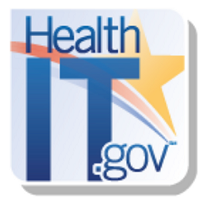 By Talisha Searcy/ Director of Research and Evaluation, Office of Planning, Evaluation and Analysis, ONC , and
By Talisha Searcy/ Director of Research and Evaluation, Office of Planning, Evaluation and Analysis, ONC , and
Lana Moriarty/ Director, Office of Consumer eHealth, Office of Programs and Engagement, ONC
Twitter: @ONC_HealthIT
To help individuals manage their health, beginning in 2011, the Medicare and Medicaid Electronic Health Record (EHR) Incentive Programs called on health care providers to enable patients to electronically view, download, and transmit their health information to a destination of the patient’s choice. In 2015, the Shared Nationwide Interoperability Roadmap reaffirmed this objective.
New data released by the Office of the National Coordinator for Health Information Technology (ONC) show that efforts to expand the availability of electronic health information are yielding significant results. Specifically, the data show that 95 percent of the nation’s hospitals provide patients with the ability to view their health information electronically, 87 percent provide individuals the ability to download their health information, and 69 percent of them provide patients with the ability to view, download, and transmit their health information in 2015.
These are dramatic increases in a very short period of time: both view and download availability have increased 70 percent compared to 2012, and the proportion of hospitals that provide all three capabilities – view, download, and transmit – increased 7-fold from 2013 estimates, where only 10 percent of the hospitals provided the same access. Moreover, all states had at least 40 percent of their hospitals providing patients with the capability to view, download, and transmit their health data in 2015; by contrast, in 2013, no states had 40 percent or more of their hospitals with view, download, and transmit capabilities.
Providing view, download and transmit availability is an important means of enabling the right of individuals to get and use their health information. Therefore, ONC and the Office for Civil Rights (OCR) continue to promote awareness about this right of access under the Health Insurance Portability and Accountability Act (HIPAA). Following the release of OCR guidance and Frequently Asked Questions (FAQs) to reiterate and further explain patient access rights and covered entity responsibilities under HIPAA, OCR and ONC developed a series of videos about access rights intended for a wide range of audiences, including patients themselves. Through these educational tools, individuals will be able to understand their HIPAA right to request access to see and get copies of their health information, including information about fees or sending information to a third party of their choice, like a family member or an application (app).
To encourage the development of technological innovations when it comes to putting electronic health information in the hands of every individual, ONC also issued the Consumer Health Data Aggregator Challenge. This challenge fosters innovation using Fast Healthcare Interoperability Resources (FHIR) and open application programming interfaces (APIs) to develop solutions that will allow patients to electronically access their health data in one place from various sources.
In addition to these new efforts, ONC continues to support the Blue Button Initiative, which helps enable patients and their caregivers to access their health information electronically. Today, over 600 organizations have pledged to increase patient access to and use of their own health data through this initiative. Additionally, the Blue Button Connector provides patients access to possible sources of their health data, and other tools that will allow them to use and share their electronic health information.
However, we know that it takes more than guidance documents and software applications to get information to individuals. Just as important is helping health care providers understand how to leverage these important tools. Earlier this year, ONC released the first phase of a Playbook for Providers, an online tool for clinicians, office staff, hospital administrators, and others to get the most out of their health IT. The first phase of the Playbook explains patient portals and describes how providers can make patient portals work for their practice and their patients.
Through these efforts, ONC continues to work with health IT developers, individuals, and clinicians alike to keep the momentum going when it comes to patient access to health information where and when it is needed most.
This article was originally published on the Health IT Buzz and is syndicated here with permission.
